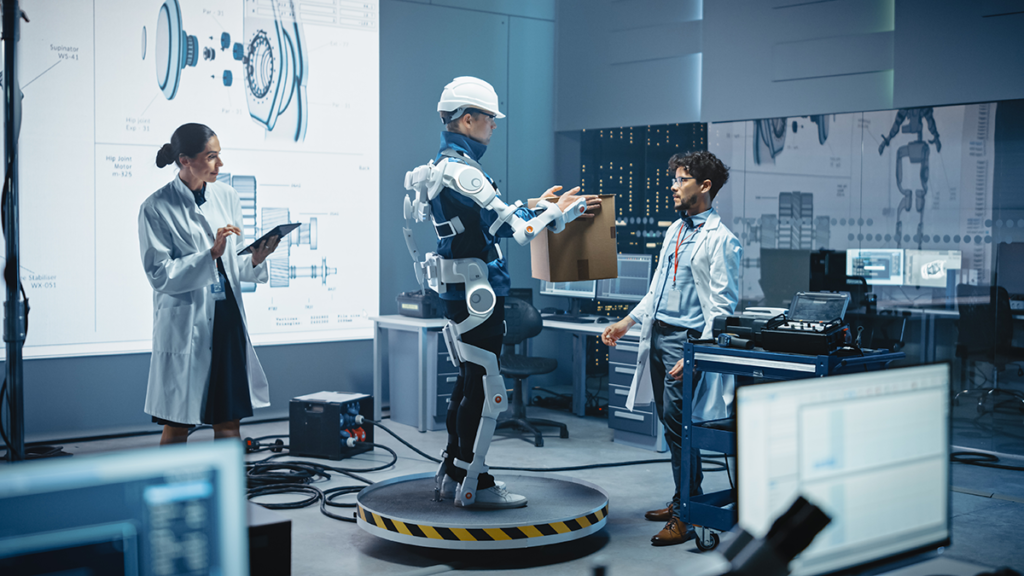How might you adapt, mentally and physically, to having an additional limb added to your body? Researchers have attempted to answer this question by asking people to test robotic arms in virtual reality.
A Supernumerary Robotic Limb (SRL) is a wearable robot which provides a human user with additional robotic arms. It can be used to assist wearers in complex tasks across a wide range of applications, including aerospace manufacturing, construction, elderly assistance and even gait rehabilitation.
A group of researchers from the University of Tokyo, Keio University and Toyohashi University of Technology in Japan wanted to understand how people would react and change to the addition of a system such as the one described above. This, in turn, would help contribute to the design of real, physical robotic supernumerary limb systems that people can use naturally and freely just like our own bodies.
The study involved creating a virtual robotic limb system that users could control with their feet in a virtual environment. The participants were asked to perform various tasks in virtual reality using these virtual limbs.
“We investigated whether virtual robotic arms, as supernumerary limbs, could be perceived as part of one’s own body, and whether perceptual changes would occur regarding the proximal space around the robotic arm,” said Ken Arai from the Research Centre for Advanced Science and Technology (RCAST) at the University of Tokyo.
Participants wore a head-mounted display to give them a first-person view of their own arms represented in VR, as well as the additional virtual robotic arms. They then had to perform tasks using only the virtual robotic arms, which were controlled by moving their toes. Tactile devices returned sensations from the virtual robotic arms to the tops and soles of their feet when they touched an object, like a virtual ball.
After the tests, participants reported feeling like the virtual robotic arms had become their own extra arms and not just extensions of their real arms or feet.
“The scores of subjective evaluation statistically became significantly higher for ‘sense of body ownership,’ ‘sense of agency’ and ‘sense of self-location,’ which are important measures of embodiment, where the supernumerary robotic limb is able to become part of the body,” said Arai.
The team also found that the participant’s ‘peripersonal space’ (the area around our bodies which we perceive as being our personal space) extended to include the area around the virtual robotic arms.
As Arai explained: “We succeeded in capturing the positive association between the perceptual change in visuo-tactile integration around the supernumerary robotic limbs (peripersonal space), and the score change of subjective evaluation of feeling the number of one’s arms increased (supernumerary limb sensation).”
The next step is to look at the potential for cooperative behaviour between participants’ own arms in virtual reality and the virtual robotic arms.
“Investigating the mechanisms and dynamics of the supernumerary limb sensation reported here from the standpoint of cognitive neuroscience will be important in exploring human plasticity limits and the design of supernumerary robotic limb systems,” said Arai.
By attempting to gain some understanding of the changes and efforts required to operate a supernumerary robotic limb system in virtual reality, this will help in designing real-life systems for a future in which people can use them just like their own body – opening up a whole new range of applications.
